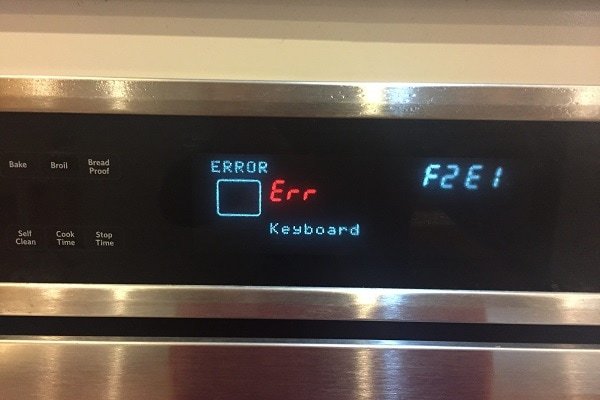
Whirlpool ovens and ranges are renowned for their reliability, but like all appliances, they can encounter issues now and then. Error code E3 is one of those hiccups that can leave you scratching your head. Essentially, it’s a built-in alert system telling you something isn’t quite right. You might think of it as your oven’s way of tapping you on the shoulder and saying, “I need a little help here.” In this article, we’ll delve into what causes this error, and more importantly, when it’s time to pick up the phone and call a technician.
Understanding Error Code E3: What It Means
Before diving into the “when” of calling a technician, let’s talk about the “what.” So, what exactly is Error Code E3? In the simplest terms, it usually relates to a problem with the oven’s temperature sensor. Think of the sensor as the thermostat in your home – it measures and regulates the temperature to ensure everything runs smoothly. If there’s a glitch, the oven can’t accurately control the heat, kind of like trying to drive with a broken speedometer.
Error Code E3 appears when the oven’s internal temperature sensor fails to communicate accurately with the control board. This failure could stem from several issues, such as a faulty sensor, a loose wiring connection, or even a problem with the control board itself. Imagine trying to have a conversation on a bad phone line where every other word is lost – that’s what your oven is experiencing.
Understanding this error is crucial because it affects how your food cooks. Without a properly functioning sensor, your oven might underheat or overheat, leading to poorly cooked meals. If this code pops up, it’s your oven’s way of saying, “Hey, something’s not right here!” So, what should you do next?
Simple Troubleshooting Steps You Can Try
Before you dial up a technician, there are a few basic checks you can perform. Start by turning off your oven and then turning it back on. It sounds simple, but much like restarting a frozen computer, sometimes a reset can clear minor glitches. Wait a few minutes before switching it back on to see if the error disappears.
If the code persists, inspect the oven’s temperature sensor. Ensure it’s securely connected and there are no visible damages. If you’re comfortable doing so, you can refer to your oven’s manual to locate the sensor. Remember, it’s like checking the connection on your smartphone charger when it won’t charge.
Sometimes, the environment can play a role in triggering error codes. Excessive moisture or high ambient temperatures can affect sensor readings. Make sure your oven has adequate ventilation and isn’t subject to moisture buildup. If these steps don’t resolve the issue, it might be time to consider professional intervention.
When To Call a Technician: Assessing the Situation
So, you’ve tried troubleshooting, but the stubborn error code won’t budge. When should you call in a professional? If the code persists after a reset or if DIY fixes don’t resolve the problem, it’s wise to consult a trained technician. They have the expertise and tools to delve into more complex issues that aren’t immediately visible, much like a mechanic with a diagnostic tool for your car.
Error Code E3 might also indicate deeper electrical issues within the oven, such as a malfunctioning control board or severely damaged wiring. Attempting to fix these without professional help can be risky and might cause further damage to your appliance. Having a technician look into these concerns can save you time, hassle, and potentially, a lot of money.
Moreover, if you notice any unusual smells, such as burning, or if the oven behaves erratically – like turning on and off by itself – these are red flags that need immediate professional attention. It’s better to be safe than sorry, and a technician can ensure everything is running smoothly and safely.
Preventing Future Issues: Tips and Tricks
Once your oven is up and running again, keeping it in good shape is key. Regular maintenance can go a long way in preventing issues like Error Code E3. Just like scheduled oil changes for a car, your oven benefits from routine attention.
Make it a habit to clean your oven regularly to prevent residue buildup, which can affect sensors and other components. Use your vacuum or a dry cloth to gently clean around the sensor to remove any debris. Also, inspect the seals on your oven door occasionally to ensure they’re tight and not worn out, as this can lead to temperature inconsistencies.
Finally, consider using a surge protector to safeguard your appliance from electrical fluctuations, especially during severe weather. Think of it as an insurance policy for your oven – small investments now can prevent big headaches later. By staying proactive, you’ll not only extend your oven’s lifespan but also ensure your culinary adventures remain uninterrupted.